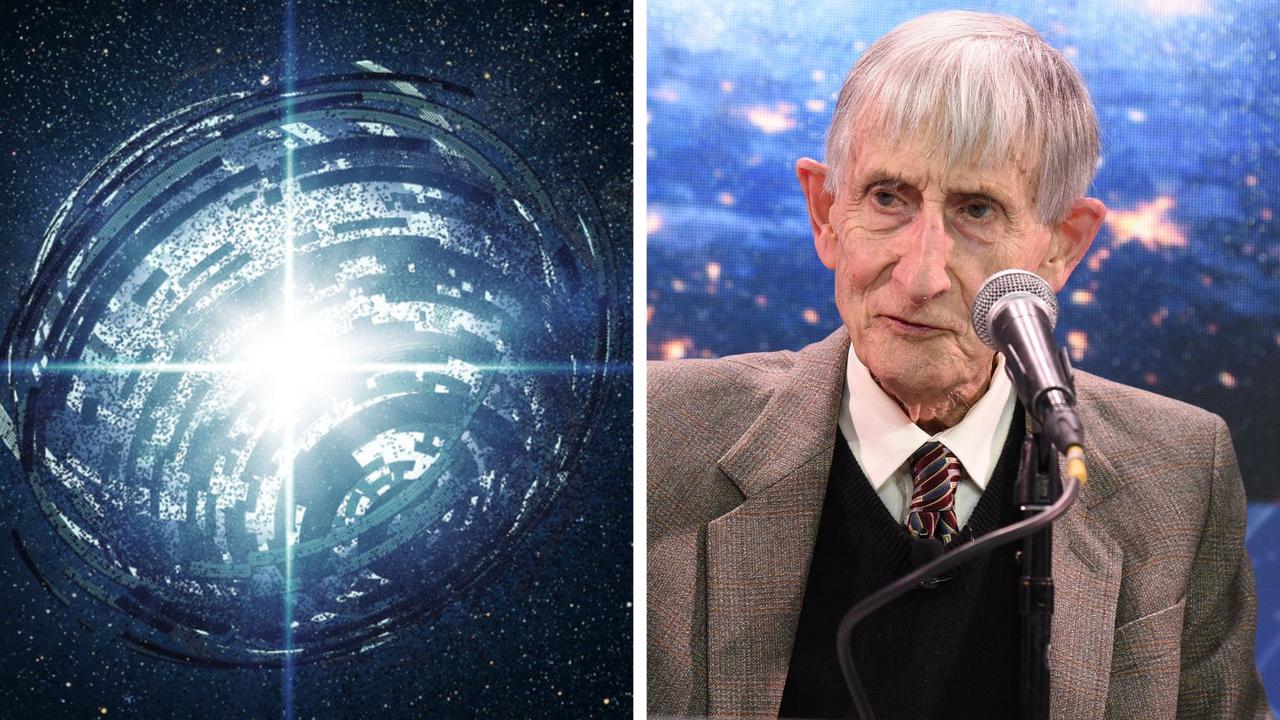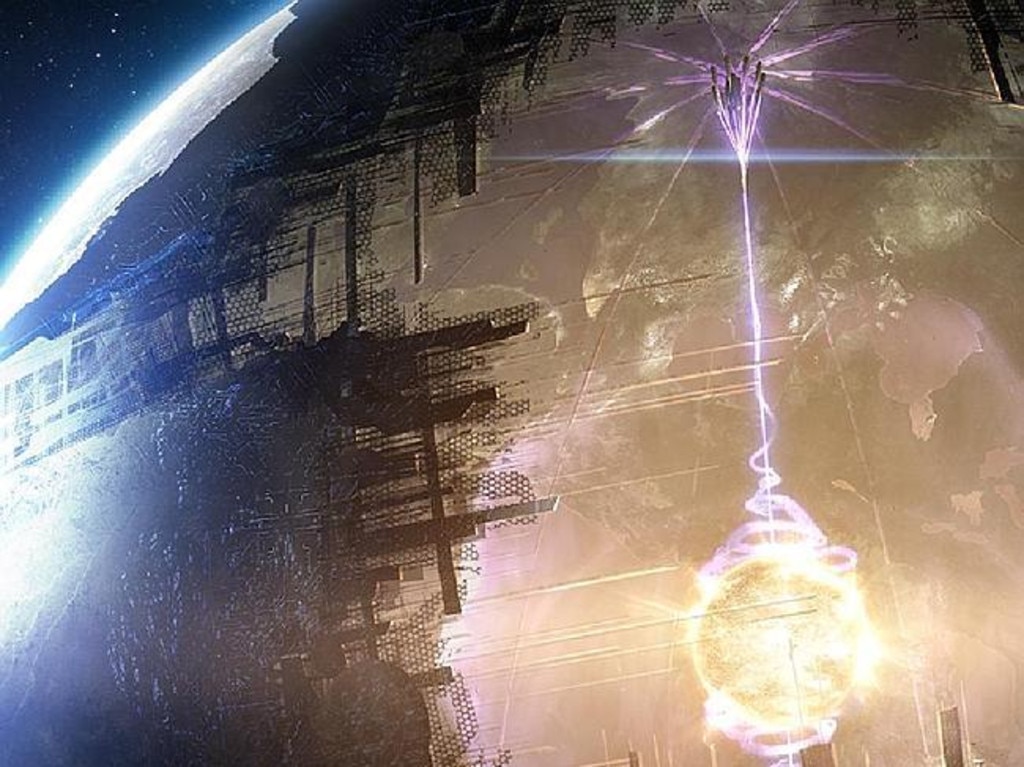Study finds potential Dyson Sphere megastructure candidates in the Milky Way
Scientists say mysterious objects found in the Milky Way fit the bill for something many never thought possible.

Mysterious objects found in the Milky Way fit the bill for theorised “radiation-harvesting megastructures”, scientists said after making the breakthrough discovery.
Dyson spheres, theoretical megastructures proposed by physicist Freeman Dyson in 1960, were hypothesised to be constructed by advanced civilisations to harvest the energy of host stars.
It’s thought that these structures absorb visible light from the star and emit “waste-heat” as infrared radiation, creating a detectable signature.
A study published on May 6 in the Monthly Notices of theRoyal Astronomical Societyrevealed seven potential candidates for Dyson spheres, raising eyebrows in the world of academia.
Led by Matías Suazo from Uppsala University, the international team used data from the Gaia, 2MASS, and WISE astronomical surveys to identify these potential megastructures.
The study, titled “Project Hephaistos – II. Dyson sphere candidates from Gaia DR3, 2MASS, and WISE,” used a sophisticated data analysis pipeline to sift through a sample of approximately five million objects.

“All of these objects are M-dwarfs, for which astrophysical phenomena cannot easily account for the observed infrared excess emission,” the paper stated.
The researchers emphasised that analysis and follow-up observations are needed to confirm the nature of these candidates.
“We would like to stress that although our candidates display properties consistent with partial (Dyson Spheres), it is definitely premature to presume that the MIR (mid-infrared) presented in these sources originated from them,” they concluded.
The team meticulously analysed Gaia DR3 data, which provides parallax-based distances (method used by astronomers to measure how far away stars are from Earth), various astrophysical parameters, and infrared observations from the 2MASS and WISE surveys.
The approach allowed the researchers to construct detailed spectral energy distributions for the identified candidates, allowing them to characterise the astronomical sources.
Project Hephaistos, the overarching initiative behind the study, aims to establish the existence of Dyson spheres in the Milky Way.
This latest paper builds on the initial findings from 2022, which analysed Gaia DR2 and WISE data to set constraints on the frequency of these megastructures.
The researchers acknowledged that the actual fraction of stars hosting Dyson spheres is likely much lower than their upper limits suggest, given the potential for other effects, like dust emission and source blending, to mimic the observed signatures.

As is usual in academia, the study’s findings are open to further scrutiny and verification.
Professor of Theoretical Astrophysics Simon Goodwin from the University of Sheffield broke it down for the layman in The Conversation last month while explaining flaws in the Dyson Sphere hypothesis more broadly.
“This is a detailed study looking for ‘oddballs’ among stars,” Prof Goodwin explained.
“The seven promising candidates aren’t obliviously due to a disc, as they weren’t good fits to disc models.”
The researchers cautioned against making overblown claims about their findings, and Prof Goodwin agreed.
He said historically, Dyson spheres were considered to be based on the assumption that advanced civilisation has vast power requirements as was reinforced by the Kardashev scale, proposed by astronomer Nikolai Kardashev, which rates civilisations based on their energy consumption.
“Dyson’s reasoning for considering such megastructures assumed that advanced civilisations would have vast power requirements,” Prof Goodwin noted.
“However, our global energy use has started to grow much more slowly over the past 50 years, and especially over the last decade. ”
Prof Goodwin highlighted the challenges of hypothetically constructing such megastructures.
He said that if we were to collect 10 percent of the sun’s energy, a surface area equal to 1 billion Earths would be required.
“A significant problem is that our Solar System only contains about 100 Earths worth of solid material, so our advanced alien civilisation would need to dismantle all the planets in 10,000 planetary systems and transport it to the star to build their Dyson sphere,” Prof Goodwin wrote.

“To do it with the material available in a single system, each part of the megastructure could only be one metre thick.
Moreover, he argued future technologies may reduce the need for such megastructures.
“As we now look ahead to future technologies we see efficiency, miniaturisation and nanotechnologies promise vastly lower power use,” he said.
“I’d also strongly suspect that by the time a civilisation got to the point of having the ability to build a Dyson Sphere, they’d have a better way of getting the power than using a star, if they really needed it.”
Despite these challenges, Prof Goodwin said the study’s findings provide valuable insight.
“It almost certainly isn’t an alien megastructure. A variety of natural explanations have been proposed, such as clouds of comets passing through a dust cloud,” he explained.
“But it is an odd observation. An obvious follow-up on the seven candidates would be to look for this signature as well.
Prof Goodwin left the door just slightly ajar for the possibility of the feats of extraterrestrial intelligence actually existing.

“Maybe I’m wrong, but it can’t hurt to look,” he concluded.
Dyson died in 2020 at age 95 following a fall.
While the speculative spheres bearing his name form much of his legacy, he is also widely known for challenging climate science, other theoretical work in space exploration, and theories on the impacts of nuclear warfare.
Dyson had a complex relationship with Robert Oppenheimer, the father of the nuclear bomb. They often clashed over scientific and political views, but Oppenheimer ultimately praised Dyson, and vice versa.
Despite their differences, Dyson regarded Oppenheimer as a significant influence in his career, particularly during their time together at the prestigious Institute for Advanced Study in Princeton, where Oppenheimer eventually gave Dyson a lifetime appointment.
More Coverage
Originally published as Study finds potential Dyson Sphere megastructure candidates in the Milky Way





